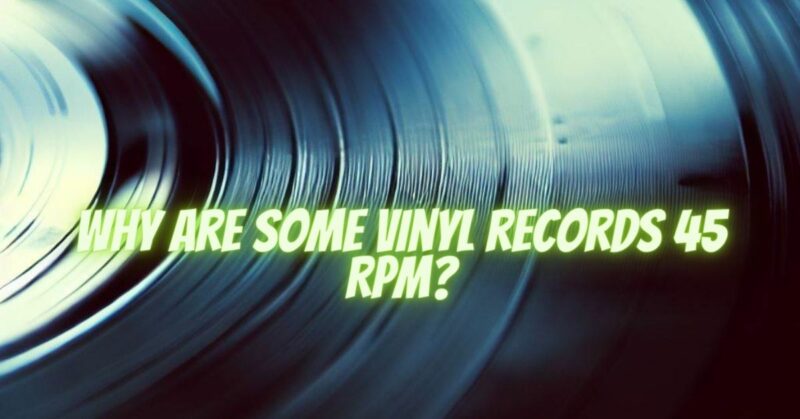Vinyl records have a rich history and unique characteristics that continue to captivate music enthusiasts. While the standard playback speed for most records is 33 1/3 revolutions per minute (RPM), there is another commonly used speed—45 RPM. In this article, we delve into the reasons why some vinyl records are pressed at 45 RPM, exploring the advantages and purposes behind this specific speed.
- Sound Quality and Fidelity:
One primary reason for pressing vinyl records at 45 RPM is to enhance the sound quality and fidelity of the music. The higher speed allows for increased detail retrieval and improved audio dynamics. The wider grooves and increased rotational speed provide a greater signal-to-noise ratio, resulting in enhanced clarity, separation, and overall sonic fidelity. This makes 45 RPM a preferred choice for audiophile-grade releases, where achieving the highest possible sound quality is of utmost importance.
- Dynamic Range and Frequency Response:
Pressing records at 45 RPM allows for a larger dynamic range and extended frequency response. The increased rotational speed provides more physical space on the record for the grooves to capture a wider range of audio information. This results in the ability to reproduce greater subtleties in the music, including finer nuances, details, and transient response. Records pressed at 45 RPM are often favored for genres with complex instrumentation, classical music, and recordings with intricate dynamics.
- Vinyl Real Estate:
Vinyl records have limited space, and the duration of the music affects how much content can be accommodated on each side. By pressing records at 45 RPM, each side of the record can hold a shorter amount of music while maintaining a high level of fidelity. This is particularly beneficial for albums with longer tracks or albums where the desired sound quality cannot be achieved within the time limitations of a single LP side at 33 1/3 RPM. By spreading the music across multiple LP sides at 45 RPM, the sound quality can be preserved without compromising the duration of the tracks.
- DJ Performance and Mixing:
Another application of 45 RPM records is in DJ performances and mixing. The higher speed allows for shorter track durations per side, which facilitates faster transitions and seamless mixing between songs. DJs often utilize 45 RPM records for genres that require quick beatmatching or mixing techniques, such as certain electronic dance music styles. The increased rotational speed allows DJs to maintain the energy and momentum of a live set, providing greater flexibility and control in their performances.
Conclusion:
Pressing vinyl records at 45 RPM offers several advantages, including enhanced sound quality, improved fidelity, expanded dynamic range, and extended frequency response. It allows for finer detail retrieval, especially in complex music recordings, classical music, and audiophile-grade releases. The use of 45 RPM is also prevalent in DJ performances, enabling smoother mixing and quick transitions between tracks. By taking advantage of the benefits provided by this higher speed, vinyl records continue to offer an immersive and captivating listening experience for music enthusiasts around the world.

